Showing Spotlights 265 - 272 of 624 in category All (newest first):
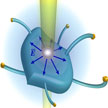 Over the years, researchers have developed a large number of techniques to synthesize nanowires and nanotubes in the laboratory. These procedures vary widely in their hardware requirements and methodology. Nevertheless, they all share a set of common goals: simplicity of protocol; fast execution; and low energy input. Now, an international group of scientists has reported a breakthrough in all three of these areas, leading to a revolutionary and remarkably simple technique for preparing one-dimensional nanostructures. As an example, they demonstrate a unique approach to growing amorphous boron nanowires.
Over the years, researchers have developed a large number of techniques to synthesize nanowires and nanotubes in the laboratory. These procedures vary widely in their hardware requirements and methodology. Nevertheless, they all share a set of common goals: simplicity of protocol; fast execution; and low energy input. Now, an international group of scientists has reported a breakthrough in all three of these areas, leading to a revolutionary and remarkably simple technique for preparing one-dimensional nanostructures. As an example, they demonstrate a unique approach to growing amorphous boron nanowires.
Feb 4th, 2014
 Paper could lead to low-cost innovative devices and applications is lab-on-a-chip technology. In new work, researchers in Korea have, for the first time, used paper as a platform material for actively actuating an electronic microfluidic chip. This novel, powered fluidic chip - known as an active paper open chip (APOC) - allows the full range of fluidic operations by implementing an electric input on paper via an electrowetting technique.
Paper could lead to low-cost innovative devices and applications is lab-on-a-chip technology. In new work, researchers in Korea have, for the first time, used paper as a platform material for actively actuating an electronic microfluidic chip. This novel, powered fluidic chip - known as an active paper open chip (APOC) - allows the full range of fluidic operations by implementing an electric input on paper via an electrowetting technique.
Jan 23rd, 2014
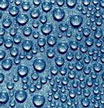 In the field on controlling liquid movement on surfaces, super water-repellent surfaces have been well-documented. In contrast, comparatively fewer reports are available on the design of water pinning surfaces. In new work, scientists have achieved polymer films with exceptionally high water pinning forces through nanoimprinted surface structures, without the incorporation of any chemical treatment. This work contributes to the field on water pinning surfaces by providing a simple geometrical rule-of-thumb design of nanostructures to engineer polymeric surfaces with tunable water pinning ability.
In the field on controlling liquid movement on surfaces, super water-repellent surfaces have been well-documented. In contrast, comparatively fewer reports are available on the design of water pinning surfaces. In new work, scientists have achieved polymer films with exceptionally high water pinning forces through nanoimprinted surface structures, without the incorporation of any chemical treatment. This work contributes to the field on water pinning surfaces by providing a simple geometrical rule-of-thumb design of nanostructures to engineer polymeric surfaces with tunable water pinning ability.
Jan 14th, 2014
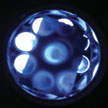 Silicon offers a unique combination between mechanical and electrical properties making it one of the most developed materials in semiconductor industry. However, silicon is brittle and cannot be flexed, hindering its potential for high performance electronics that is flexible, stretchable or applied to irregular shapes. Researchers have now developed a pragmatic approach to achieve high performance integrated electronic systems, including thermoelectric energy harvesters, onto flexible silicon substrates.
Silicon offers a unique combination between mechanical and electrical properties making it one of the most developed materials in semiconductor industry. However, silicon is brittle and cannot be flexed, hindering its potential for high performance electronics that is flexible, stretchable or applied to irregular shapes. Researchers have now developed a pragmatic approach to achieve high performance integrated electronic systems, including thermoelectric energy harvesters, onto flexible silicon substrates.
Dec 11th, 2013
 Future electronics will look nothing like today's rigid boxes, be they the latest smartphones, tablets, or computers. Instead, they will be extremely light, soft, flexible, transparent, and integrated into everyday objects like paper or fabrics. These advanced electronic systems will be fabricated on soft substrates by integrating multiple crucial components such as logic and memory devices as well as their power supply. Researchers have now successfully demonstrated a rewritable, transferable, and flexible sticker-type organic memory on arbitrary nonconventional substrates through a simple, low-temperature and cost-effective one-step methodology.
Future electronics will look nothing like today's rigid boxes, be they the latest smartphones, tablets, or computers. Instead, they will be extremely light, soft, flexible, transparent, and integrated into everyday objects like paper or fabrics. These advanced electronic systems will be fabricated on soft substrates by integrating multiple crucial components such as logic and memory devices as well as their power supply. Researchers have now successfully demonstrated a rewritable, transferable, and flexible sticker-type organic memory on arbitrary nonconventional substrates through a simple, low-temperature and cost-effective one-step methodology.
Oct 25th, 2013
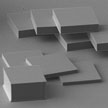 For microprobes, both the pick-up and placement are challenging due to the adherent forces. For microgrippers, the pick-up is easier and secure due to the gripping motion, but the placement is still difficult. When a microgripper opens its gripping fingers, the microobject still adheres to one of the fingers by strong adhesion forces. Owing to force scaling laws, the adhesion forces at the microscale - capillary forces, van der Waals forces, and electrostatic forces - dominate gravity. To overcome these challenges, researchers have developed a manufacturing route to three dimensional silicon microsystems, which they termed 'micro-masonry', based on individual manipulation.
For microprobes, both the pick-up and placement are challenging due to the adherent forces. For microgrippers, the pick-up is easier and secure due to the gripping motion, but the placement is still difficult. When a microgripper opens its gripping fingers, the microobject still adheres to one of the fingers by strong adhesion forces. Owing to force scaling laws, the adhesion forces at the microscale - capillary forces, van der Waals forces, and electrostatic forces - dominate gravity. To overcome these challenges, researchers have developed a manufacturing route to three dimensional silicon microsystems, which they termed 'micro-masonry', based on individual manipulation.
Oct 24th, 2013
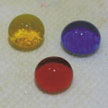 Any coating, no matter how durable, is susceptible to physical and chemical damages. Self-healing, which has become a popular theme in the field of material science, can endow coatings with ability to recover their surface properties after being damaged. New work demonstrates that a superamphiphobic fabric with remarkable multi self-healing ability against both physical and chemical damages and exceptional liquid-repellency to low surface-tension liquids including ethanol can be achieved through a two-step wet-chemistry coating technique.
Any coating, no matter how durable, is susceptible to physical and chemical damages. Self-healing, which has become a popular theme in the field of material science, can endow coatings with ability to recover their surface properties after being damaged. New work demonstrates that a superamphiphobic fabric with remarkable multi self-healing ability against both physical and chemical damages and exceptional liquid-repellency to low surface-tension liquids including ethanol can be achieved through a two-step wet-chemistry coating technique.
Oct 18th, 2013
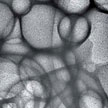 Researchers are working hard to find inexpensive alternatives to platinum catalysts for use in hydrogen fuel cells. Doped carbons were discovered to be a possible alternative to platinum-based materials about five years ago. Researchers have now developed a really simple route to carbon materials that perform almost as well as a commercial platinum/carbon in a key fuel cell reaction. To make these materials, they use gelatin - the same gelatin you'd use to make jelly/jello.
Researchers are working hard to find inexpensive alternatives to platinum catalysts for use in hydrogen fuel cells. Doped carbons were discovered to be a possible alternative to platinum-based materials about five years ago. Researchers have now developed a really simple route to carbon materials that perform almost as well as a commercial platinum/carbon in a key fuel cell reaction. To make these materials, they use gelatin - the same gelatin you'd use to make jelly/jello.
Oct 7th, 2013
 Over the years, researchers have developed a large number of techniques to synthesize nanowires and nanotubes in the laboratory. These procedures vary widely in their hardware requirements and methodology. Nevertheless, they all share a set of common goals: simplicity of protocol; fast execution; and low energy input. Now, an international group of scientists has reported a breakthrough in all three of these areas, leading to a revolutionary and remarkably simple technique for preparing one-dimensional nanostructures. As an example, they demonstrate a unique approach to growing amorphous boron nanowires.
Over the years, researchers have developed a large number of techniques to synthesize nanowires and nanotubes in the laboratory. These procedures vary widely in their hardware requirements and methodology. Nevertheless, they all share a set of common goals: simplicity of protocol; fast execution; and low energy input. Now, an international group of scientists has reported a breakthrough in all three of these areas, leading to a revolutionary and remarkably simple technique for preparing one-dimensional nanostructures. As an example, they demonstrate a unique approach to growing amorphous boron nanowires.
 Subscribe to our Nanotechnology Spotlight feed
Subscribe to our Nanotechnology Spotlight feed





